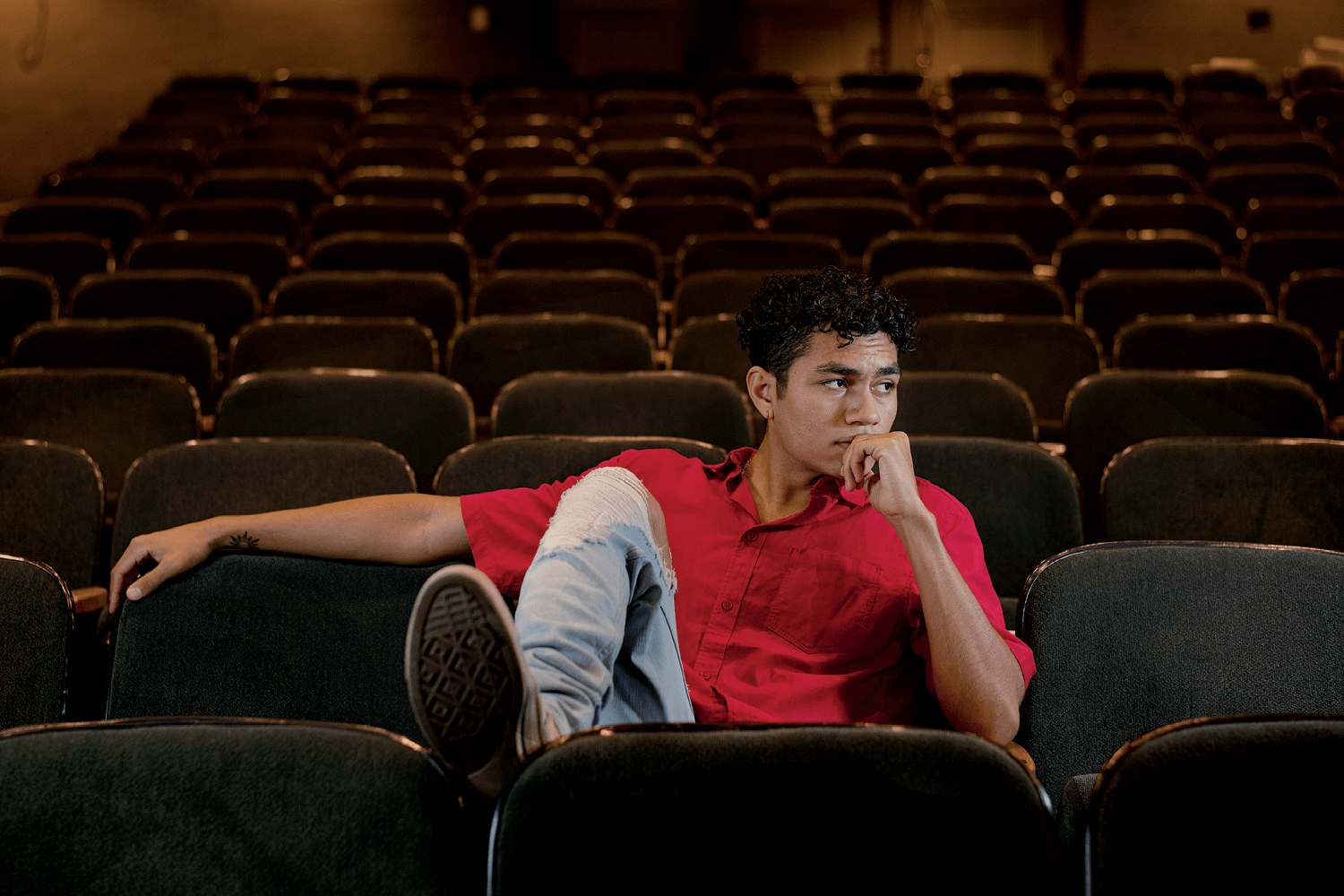Vibrancy Theater is not the Diversity Show.
The student leaders of Ohio University’s new theater collective for Black, Indigenous and People of Color (BIPOC) artists have no interest in filling quotas or educating white audiences.
For Janai Lashon, MFA ’21, Vibrancy’s founding co-artistic director, “safe space” is not a concept she can speak to. As a Black woman, she says, “I’ve never been in one.”
As an actor, activist and cultural competency consultant, she does know “how to be courageous and advocate for myself.” She sees Vibrancy as a space for courageous advocacy, an incubator of authentic, fearless art.
With Lashon and her peers in mind, Charles Smith, retired distinguished professor of theater, pitched the idea of a BIPOC student-led campus theater in spring 2020—as schools, theaters and companies nationwide hastened to officially respond to police killings of Breonna Taylor, George Floyd and so many others.
For the student leaders who took it from there, Vibrancy represents actual institutional progress—beyond hashtags and good intentions. Whether publicly addressing systemic racism or directing work by a playwright of color, Lashon maintains that true authenticity comes from lived experience. Either you have it, or you listen and defer.
As she puts it: “There are stories only we can tell.”
Not to say Vibrancy is BIPOC-only. “Anyone can join,” says Keshawn Mellon, BFA ’21, founding co-artistic director. However, the work remains BIPOC-centric and led by BIPOC students “knowledgeable about situations and themes involving them.”
Vibrancy’s mission includes providing a “sustainable space for student theater artists to support and amplify BIPOC voices, stories and artistry in the spirit of authenticity and excellence.” And while the often-politicized concept of guaranteed “safe spaces” may not resonate with Vibrancy’s founders (microaggressions and even outright violence unfortunately can occur anywhere), they do hold space for difficult dialogues among diverse viewpoints and backgrounds, they condemn violence, and they promote a supportive, inclusive environment.
Their mission also involves challenging dominant narratives while implementing anti-racist procedures—from “circular leadership” that subverts top-down hierarchy, to Black Acting Methods and approaches to hair, makeup and lighting design that serve all artists.
Building on seed money donated by Smith, other faculty and staff pitched in, and the College of Fine Arts matched a startup donation from the Miranda Family Fund, started by Hamilton creator Lin-Manuel Miranda and his family.
“We are committed to fully producing a Vibrancy Theater show each year as part of our main stage season, to support Vibrancy’s mission of promoting BIPOC stories,” says Merri Biechler, MFA ’07, director of the School of Theater.

Graduate student Roberto Di Donato is one of the founders of Vibrancy Theater and serves as co-executive producer. Photo by Ben Wirtz Siegel, BSVC ’02
Vibrancy co-executive producer Roberto Di Donato, who is pursuing an MFA in directing, emphasizes that, with the autonomy and resources it affords, “Vibrancy fulfills a need that wasn’t being met before.” He points to other recent institutional changes adopted after listening to Vibrancy’s student advocates: adding BIPOC students to the main stage season selection committee, restricting theater work hours, and providing counseling to BIPOC students and faculty.
Vibrancy’s networking and leadership opportunities also translate into professional growth. Mellon notes that, during a recent job interview, the prospective employer referenced him as “‘a person who has leadership skills and can start something on their own and work independently.’ If I wasn’t co-artistic director of Vibrancy Theater, it’s not likely that they’d be able to get that off my resume.”
During their first year of remote collaboration, these student leaders established Vibrancy’s mission, constitution, bylaws and leadership, as well as the Vibrancy Theater Fund to hire BIPOC guest artists. They even hosted their first teaching artist, playwright travis I. tate.
“I’m almost embarrassed at how proud I am of these students,” says Smith, Vibrancy’s faculty advisor. “They blew any doubt about whether they were capable of doing this work out of the water.”
In the spring, Vibrancy announced its inaugural main stage show, the November 2021 premiere of Absentia , a new American play written by Olivia Matthews, MFA ’20, and directed by Vibrancy guest artist Tanisha Lynn Pyron.
Matthews developed Absentia for her thesis production, canceled in spring 2020 due to pandemic restrictions. She describes the work as a family drama about a young Black woman who escapes prolonged captivity and abuse to confront and redefine notions of home and family.
“ Absentia speaks to what motivates me as a writer, somebody young who is figuring themself out in the context of family dynamics,” Matthews says. “Now here’s this group who is figuring themselves out in the context of a broader theater program. So, for them to have chosen this play, I think it speaks to all of that.”
Matthews appreciates that not only did Vibrancy leaders want to do a work “by a Black woman or alum, but they’re also interested in new plays by writers of color and what they have to say in the moment now.”
Smith sees the selection as a sign: “We are listening to each other’s voices. We’re forging an identity out of who we are as a creative BIPOC community [at Ohio University], instead of trying to ride somebody else’s coattails.”
Notably, the play does not explicitly deal with issues of race. As Mellon says, “We can tell stories of racism any day, without a play. Our goal at Vibrancy is to show the broader community that we are here, and we have stories to tell about being human.”
According to Lashon, Vibrancy Theater not only represents, but also fully belongs to OHIO’s BIPOC students—past, present and future.
“We stand on the shoulders of Shon Middlebrook, the only Black person in the graduate class that came before me, who helped start the school’s Diversity and Inclusion Committee,” she says. “To him and so many others: Thank you. You’ve done well. You’ve done enough. May the universe bless you with all the returns that you deserve. May your craft surpass all your expectations.”
For Lashon, sustaining progress means “building on positive momentum with the spirit of excellence.” To the BIPOC students who come next, she says: “We’ve laid the groundwork. Go play! You don’t have to play a stereotype. You don’t have to play one type of Blackness. You be you, and you play hard, and you create with everything in you and just sustain the momentum. … Other things will break as that happens.”
Contribute to the Vibrancy Theater Fund
Feature image: Keshawn Mellon, BFA ’21, left Ohio University with a diploma and a legacy—partnering with his peers to create Vibrancy Theater, dedicated to supporting and amplifying BIPOC voices, stories and artistry. Photo by Rich-Joseph Facun, BSVC ’01




